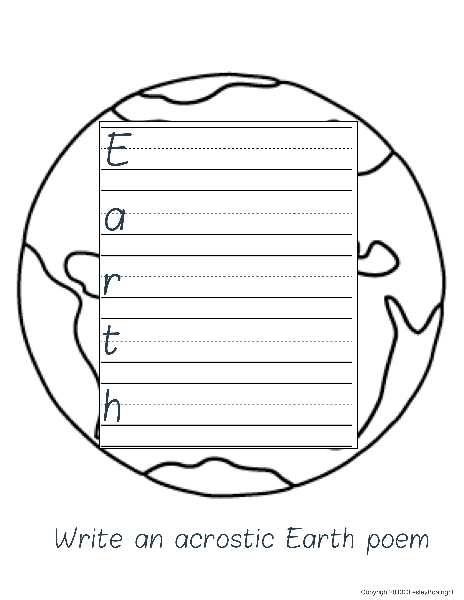Hello, everyone! Happy Easter! As you read this, I am probably either in North Carolina, enjoying Easter break with my son and his beautiful wife, or if it's Monday, I'm making that long 10-hour drive back home so I can be at work on Tuesday. I hope you had a restful Easter break, and for those of you on spring break, I have only one thing to say. JEALOUS!!
Since April is poetry month, and Earth Day also is coming up, I created a resource to combine the two! Multitasking is a good thing, right?
In case you don't know, or have forgotten, a haiku is a traditional Japanese poem made up of 17 syllables, written in a 5-7-5 format, so the first line is 5 syllables, the second line is 7 syllables, and the third line is 5 syllables. I've read that modern haiku is moving away from that format of 5,7,5 as long as there are 17 syllables, but I chose to keep it because I wanted to integrate the concept of counting syllables in each line.
I began with reminding the children what syllables were, and how now that we were becoming better readers, we would be challenged with longer words. Longer words are made up of smaller parts called syllables, parts of words. We practiced by clapping and counting the syllables in our names. Then I gave them white boards, and posted one word at a time in my pocket chart. The children clapped and counted the syllables on their own, and I could quickly scan their answers to see if they were understanding the idea of syllables. I also had them insert the slash where they thought one syllable ended and the next began, but that wasn't the main focus of the lesson. Mostly I was concerned with their ability to count the number of syllables.
garbage = 2 syllables
rainforest = 3 syllables
The next day, after a quick review of syllables, it was time to try to write a haiku about the Earth or Earth Day.
I wasn't sure if they would be able to count syllables and create the haiku, so I started with having them write a rough draft on scrap paper. Then they brought it back to me, and together we counted the out the syllables in each line, making sure it followed the 5-7-5 pattern. Once we had the haiku organized , I gave them the paper to write out their haiku in their best printing.
I wasn't sure if they would be able to count syllables and create the haiku, so I started with having them write a rough draft on scrap paper. Then they brought it back to me, and together we counted the out the syllables in each line, making sure it followed the 5-7-5 pattern. Once we had the haiku organized , I gave them the paper to write out their haiku in their best printing.
click the image above to see the unit in my TpT store
The finished poems and craftivities came out really, really cute. I was very pleased with their first attempts at writing poetry in the form of haiku. I wish I would have thought to take pictures of their finished projects last year, but you can be sure I will this year!
I also included an acrostic poem in this packet that you could use instead of the haiku. If you would like to get a download of the acrostic poem page, you can click on the picture below.
click the picture above to download your acrostic poem template.





No comments:
Post a Comment